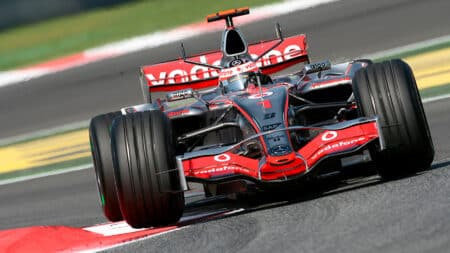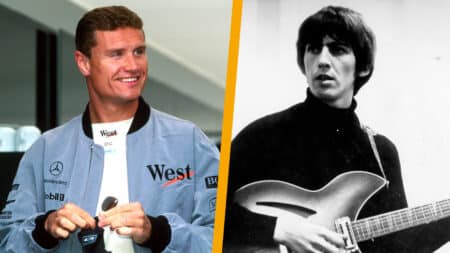
MPH: To the man trying to fill Christian Horner's shoes: good luck!
Laurent Mekies arrives as Red Bull F1 team principal with a series of immediate challenges to solve and long-term issues to tackle. He'll either sink or swim, says Mark Hughes
By Giorgio Piola and Mark Hughes
Here is the current proposal for the 2017 F1 car from the F1 technical group. The brief was to create cars five seconds per lap faster than the current generation, in response to current drivers and fan surveys each declaring current cars to be too slow and not demanding enough.
For the purposes of comparison, the dark-coloured 2017 car is contrasted in the animation with the current Mercedes in silver.
The new car would be two metres wide rather than the current 1.8 metres, returning to the regulation width last used in 1997.
[youtube]https://youtu.be/l6QLnX0fHFs[/youtube]
The rear wing would be much lower and increased in width while the lower beam wing – banned since 2014 – would return, working in conjunction with a longer and higher diffuser exit ramp. Rear tyres would be wider but retaining the existing diameter.
36seconds: Sidepods would have a mandatory angle in the longitudinal plane of 15-degrees so as to retain a short sidepod with good deformable side impact structure. The rear tyres would increase in width from 420mm to 450mm.
49seconds: In line with the increased width of the car, the front wing width would increase from 1650mm to 1850mm.
1m 09s: The rear wing main plane height would fall from 945mm to 800mm. The underside of the lower plane would fall from 740mm to 600mm.
1m 14s: The reintroduced lower beam wing would be situated between 300-375mm above the reference plane.
1m 21s: Mandatory angles on both the leading and trailing edges of the vertical turning vanes ahead of the sidepods – and the rear wing endplates.
1m 32s: A longer diffuser with a higher exit ramp would greatly increase the downforce generated by the underfloor – and also increase the proportion of total downforce generated by the underbody. It is believed this would facilitate overtaking by making the wake of the car ahead less turbulent – and reducing the aero sensitivity of the car behind.
From the archive: Another big aesthetic change in F1 – the 2009 Grand Prix preview part 1, and part 2
The latest simulations by the technical group suggest that such a car would exceed the target lap time of five seconds below current laps by as much as two seconds – ie they would be seven seconds faster than cars are currently.
The speed of such a car would increase its fuel consumption significantly and it has been accepted that there would need to be an accompanying increase in the current 100kg fuel capacity limit so that races did not become excessively fuel limited.

Laurent Mekies arrives as Red Bull F1 team principal with a series of immediate challenges to solve and long-term issues to tackle. He'll either sink or swim, says Mark Hughes

Former McLaren F1 team-mates Mika Häkkinen and David Coulthard are set to renew old rivalries in a new Evening with... tour – they told James Elson all about it

In Formula 1, driver contracts may look iron-clad on paper, but history shows that some of its biggest stars have made dramatic early exits

Former McLaren F1 ace told James Elson about his private audience with The Beatles' George Harrison, who played an unreleased grand prix-themed song